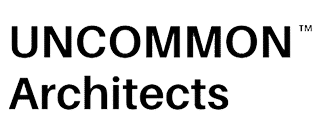Overview
Definition:
Market segmentation in architectural marketing involves dividing the target market into distinct groups based on specific criteria such as demographics, behavior, or psychographics. This strategy allows firms to tailor their marketing efforts to different segments, ensuring more effective communication and engagement with potential clients.
Detailed Description
Market segmentation is crucial for architecture firms to understand their target audience better and create customized marketing strategies that resonate with specific segments. By identifying common characteristics or preferences within each segment, firms can address the unique needs and expectations of different client groups.
Applications in Architecture
Market segmentation helps architecture firms in identifying niche markets, optimizing marketing resources, and enhancing client relationships. By catering to the specific requirements of each segment, firms can deliver personalized services and establish a strong competitive advantage in the industry.
Uses:
Market segmentation is applied in architectural marketing to tailor promotional campaigns, develop targeted messaging, and offer specialized services that appeal to different client segments. This strategy ensures that firms maximize their marketing ROI by focusing on the most relevant and profitable market segments.
Examples:
An architecture firm may use market segmentation to target luxury residential clients looking for custom-designed homes, commercial businesses in need of sustainable office spaces, or public institutions seeking innovative civic architecture solutions. By understanding the unique preferences and motivations of each segment, the firm can create compelling marketing messages that resonate with specific audiences.
Implementation
Procedure:
To implement market segmentation effectively, architecture firms should analyze market data, conduct customer surveys, and identify key segmentation criteria such as demographics, location, behavior, or project requirements. Once the segments are defined, firms can develop targeted marketing strategies, personalized communications, and tailored services to engage each segment effectively.
Steps:
1. Conduct market research to identify potential market segments.
2. Analyze customer data to understand segment preferences and needs.
3. Define segmentation criteria based on relevant factors such as project type, budget, or design style.
4. Develop targeted marketing campaigns and messaging for each identified segment.
5. Monitor and evaluate the effectiveness of segmentation strategies to make necessary adjustments.
Considerations
Market segmentation requires continuous monitoring and refinement to ensure that the segments remain relevant and profitable for the firm. Firms should regularly assess segment performance, gather feedback from clients, and adapt their marketing strategies to changing market dynamics.
Expected Outcomes
Effective market segmentation can lead to increased client engagement, improved brand perception, higher conversion rates, and enhanced customer loyalty for architecture firms. By targeting specific segments with tailored marketing initiatives, firms can achieve better results and establish long-term relationships with valued clients.
Outcomes:
The implementation of market segmentation is expected to result in a more efficient allocation of marketing resources, a higher return on investment, improved customer satisfaction, and increased brand visibility for architecture firms. By focusing on the unique needs and preferences of each segment, firms can drive business growth and stay competitive in the market.
Impact:
The short-term impact of market segmentation includes enhanced customer targeting, increased lead generation, and improved marketing campaign performance. In the long term, firms can expect to build a strong client base, establish industry expertise, and achieve sustainable business growth through effective market segmentation strategies.
Maintenance and Monitoring
Regular monitoring of market segmentation strategies is essential to ensure ongoing success and relevance for architecture firms. By tracking key performance indicators, analyzing segment feedback, and adapting marketing initiatives as needed, firms can maintain a competitive edge and drive continuous improvement in their marketing efforts.
Best Practices:
Maintaining accurate customer data, tracking segmentation metrics, and regularly reviewing marketing performance are essential best practices for successful market segmentation. Firms should also stay updated on industry trends, customer preferences, and competitive landscape to make informed decisions and optimize segmentation strategies.
Strategies:
Implementing segmentation analysis tools, conducting market segmentation workshops, and engaging with segment-specific focus groups are effective strategies for maintaining and monitoring market segmentation initiatives. By continuously evaluating segment performance, refining targeting criteria, and adapting marketing tactics, firms can ensure the sustainability and success of their market segmentation efforts.
Additional Information
Related Terms
Associated Concepts:
Market segmentation is closely related to customer profiling, target marketing, and personalized marketing strategies. By integrating these concepts, architecture firms can create comprehensive marketing plans that effectively engage diverse client segments and drive business growth.
Connections:
These related terms interact with market segmentation to enhance customer relationships, optimize marketing campaigns, and deliver valuable services tailored to specific client needs. By combining these strategies, firms can strengthen their market position, increase brand awareness, and achieve marketing objectives more effectively.
Recent Trends
Innovations:
Recent innovations in data analytics, artificial intelligence, and customer relationship management systems have revolutionized the practice of market segmentation in architectural marketing. Advanced segmentation tools enable firms to analyze complex data sets, predict client behaviors, and create highly targeted marketing campaigns for optimal results.
Updates:
Continual updates in consumer preferences, industry regulations, and technological advancements shape the landscape of market segmentation for architecture firms. Staying informed about emerging trends, evolving client expectations, and changing market dynamics is essential for firms to adapt their segmentation strategies and maintain a competitive edge in the industry.
How Uncommonarchitects.com can help you with this
Explain how:
Uncommon Architects offers comprehensive market segmentation services for architecture firms, helping them identify, target, and engage specific client segments effectively. By leveraging our expertise in data analysis, marketing strategy, and industry knowledge, firms can optimize their segmentation initiatives and achieve sustainable business growth.
Benefits:
Partnering with Uncommon Architects enables firms to access actionable insights, develop targeted marketing campaigns, and enhance client relationships through strategic market segmentation. Our collaborative approach, innovative solutions, and proven track record in architectural marketing empower firms to achieve their marketing goals and drive long-term success in the competitive market.
Are you ready to transform your studio?
FAQs
What is market segmentation for architecture firms?
Market segmentation for architecture firms involves dividing the market into distinct groups based on characteristics such as demographics, behavior, or needs to better target and serve specific client segments.

